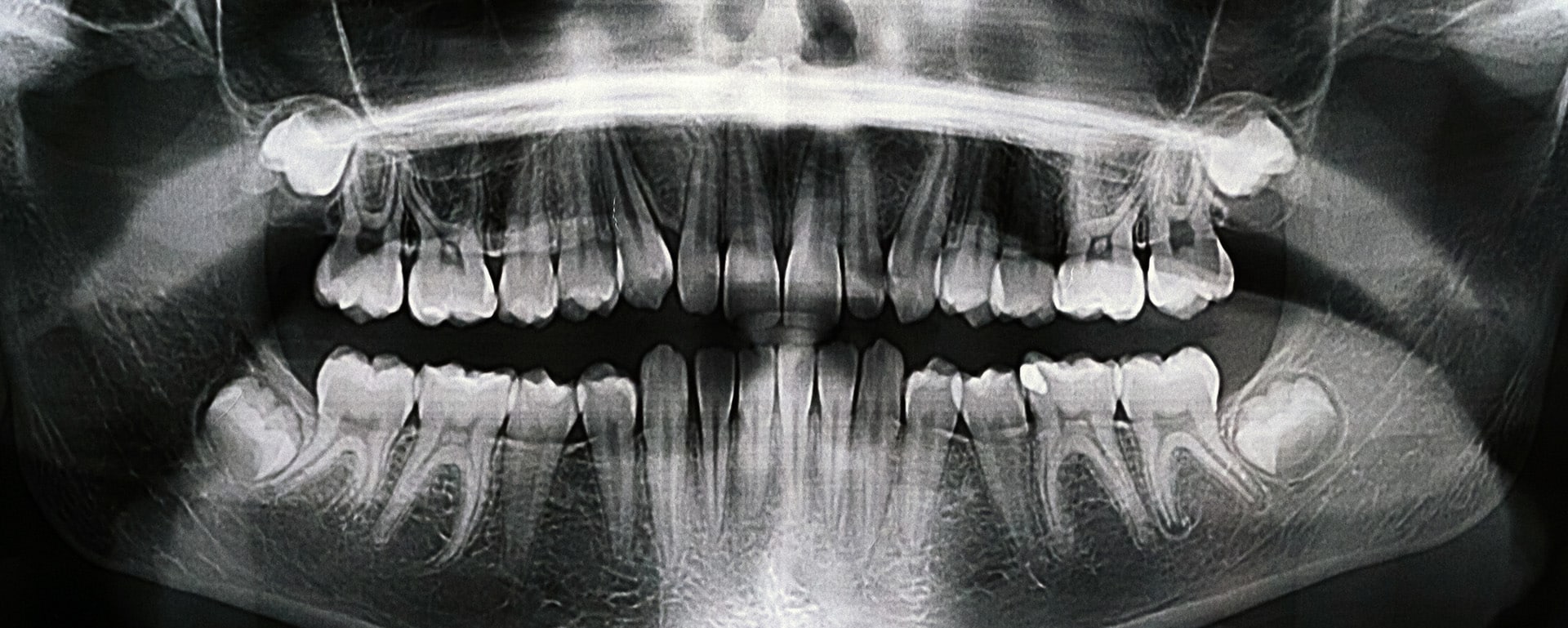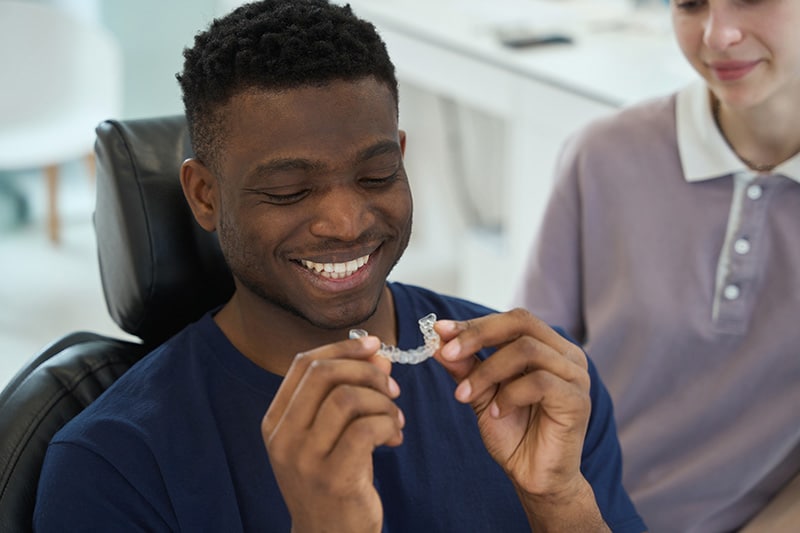Can Orthodontics help with Impacted Teeth?
Jul 11, 2021
Are you familiar with the hidden pain of impacted teeth? Many people suffer in silence, unaware of the underlying cause of their discomfort. Impacted teeth occur when a tooth fails to fully erupt or remains trapped beneath the gum line. This condition can lead to a range of symptoms, including pain, swelling, and even infection.
Fortunately, orthodontics offers a solution to provide long-lasting relief.
What are impacted teeth?
Impacted teeth are teeth that fail to fully emerge or become trapped beneath the gum line. This condition most commonly affects the third molar, also known as wisdom teeth, but can occur with any tooth in the mouth. When there is not enough space for a tooth to erupt properly, it may become impacted. This can happen due to several reasons, including overcrowding of the teeth, abnormal tooth development, or the presence of extra teeth in the mouth. Impacted teeth can cause significant discomfort and may lead to a range of dental issues if left untreated.
There are different types of impacted teeth, including horizontal impaction, vertical impaction, mesial impaction, and distal impaction. Horizontal impaction occurs when the tooth is lying horizontally beneath the gum line, while vertical impaction happens when the tooth is positioned vertically but fails to fully erupt. Mesial impaction refers to a tooth that is tilted towards the front of the mouth, while distal impaction occurs when the tooth is tilted towards the back.
Treating impacted teeth is crucial to prevent further complications and maintain optimal oral health. Orthodontic intervention offers effective solutions to guide impacted teeth into their proper position and restore a healthy, functional smile.
Causes of impacted teeth
Impacted teeth can have various causes, many of which are related to the size and alignment of the dental arches.
- Overcrowding where there is insufficient space for all the teeth to erupt properly. When the dental arch is too small, the teeth may become crowded, leading to impaction.
- Abnormal tooth development, such as teeth growing at an angle or in the wrong direction, or the presence of extra teeth in the mouth, which can disrupt the normal eruption pattern.
- Genetics can play a role in the development of impacted teeth. If a family member has had impacted teeth, there is an increased likelihood of experiencing the same issue.
- Poor oral hygiene and dental care can also contribute to the development of impacted teeth. Inadequate brushing and flossing can lead to gum disease and infections that can affect the eruption of teeth.
Symptoms and signs of impacted teeth
Impacted teeth can cause a range of symptoms, which may vary depending on the severity and location of the impact. Some common signs of impacted teeth include:
- Pain or discomfort
Impacted teeth can cause throbbing or sharp pain, especially when chewing or biting down. The pain may radiate to the surrounding areas, including the jaw, ear, or neck. - Swelling and tenderness
The gum tissue around an impacted tooth may become swollen, red, and tender. This is often accompanied by inflammation and soreness. - Bad breath or bad taste in the mouth
When a tooth is partially impacted, food particles and bacteria can become trapped around it, leading to the development of gum disease and an unpleasant odor or taste in the mouth. - Difficulty opening the mouth
In some cases, impacted teeth can limit the range of motion in the jaw, making it difficult to fully open the mouth or chew properly. - Headaches
Impacted teeth can cause headaches or migraines, especially if they are putting pressure on the surrounding nerves and tissues.
If you are experiencing any of these symptoms, it is important to seek professional help from an orthodontist or dentist who can evaluate your condition and provide appropriate treatment.
Which teeth are most often impacted?
Wisdom teeth, which are usually the last teeth to erupt — are most typically impacted. Impacted wisdom teeth are usually removed by an oral surgeon.
The second most common teeth to be impacted are the upper canines. Because these teeth play a more key role both aesthetically and, in your bite, your orthodontist will recommend treatments that help these teeth to erupt instead of removing them. A lot of times impacted canines are buried deep in the palate (upper roof of your mouth).
Complications of impacted teeth
Leaving impacted teeth untreated can lead to a range of complications and dental problems. Some potential complications include:
- Infection
Impacted teeth can create spaces where bacteria can accumulate, leading to the development of infections such as gum disease or abscesses. These infections can cause severe pain, swelling, and even fever if left untreated. - Damage to adjacent teeth
Impacted teeth can exert pressure on the neighboring teeth, causing them to shift or become misaligned. This can lead to bite problems, crowding, and further oral health issues. - Cysts or tumors
In rare cases, impacted teeth can lead to the formation of cysts or tumors. These growths can cause considerable damage to the surrounding bone and tissue if not promptly treated. - Sinus problems
Impacted upper molars can sometimes push against the sinuses, leading to sinus pain, pressure, and recurring sinus infections.
To prevent these complications, it is crucial to address impacted teeth through appropriate orthodontic treatment.
How are impacted teeth diagnosed?
Impacted teeth can only be diagnosed with a dental Xray called an OPG (orthopantomogram) which is a panoramic image of your jaw and teeth. You should be able to take this Xray at your orthodontist’s clinic. Sometimes a more detailed scan may be required to find out the angle and area of impact.
This is called a Cone Beam CT scan, which is a 3D image of the teeth and jaw. If your dentist suspects you of having an impacted tooth/ teeth, he should refer you to an orthodontist to assess and treat.
What happens if I don't treat Impacted Teeth?
Depending how they are growing, impacted teeth could cause the following problems:
-
- If they are fully impacted (i.e., under the gums), they could damage adjacent healthy teeth. Your orthodontist will be able to assess whether this is a risk or not.
-
- Impacted teeth, whether fully impacted or partially erupted, may become infected as it is difficult to clean them. You may then experience pain and inflammation due to this infection.
Treatment for Impacted Teeth
The two main methods of treating impacted teeth are:
-
- Surgical Removal
-
- Surgical Exposure + braces
Surgical removal is usually prescribed for impacted wisdom teeth. You don’t really need your wisdom teeth (other than the gaining of wisdom!), so removal is a good solution for these teeth. However, if your canines are impacted in your palate, the recommended treatment is always surgical exposure combined with orthodontics. Your orthodontist will refer you to an oral surgeon who will first expose the tooth. An attachment is placed on the exposed tooth, which is then attached to your braces, and the orthodontist will then work to guide the tooth to its proper position. You will need to wear braces throughout this process. Once the impacted tooth has been brought down to its rightful position on your gums, the braces can be removed.
Conclusion
Impacted teeth can cause significant pain and discomfort, but with the help of orthodontics, relief is within reach. By understanding the causes, symptoms, and treatment options for impacted teeth, individuals can take proactive steps towards a healthier, more comfortable smile. Whether it involves utilising braces or undergoing surgical intervention, seeking professional help from an orthodontist is crucial to properly address impacted teeth and prevent further complications.
If you are experiencing any symptoms of impacted teeth or are concerned about the alignment of your teeth, it is important to schedule a consultation with an orthodontist.











